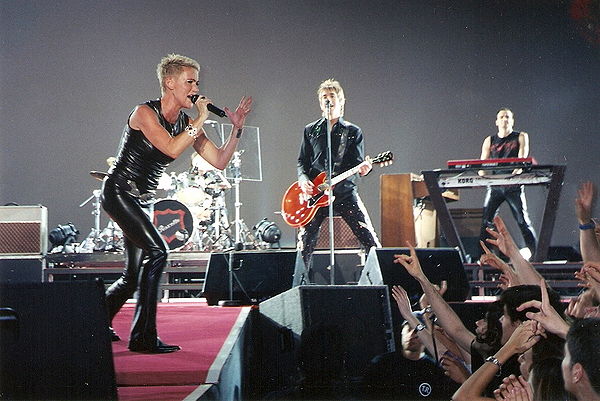Have a Nice Day (Roxette album)
Videos
Page
Have a Nice Day is the sixth studio album by Swedish pop duo Roxette, released worldwide from 22 February 1999 by Roxette Recordings and EMI. Recorded over an 18-month period in studios in Sweden and Spain, the album was produced by Marie Fredriksson, Per Gessle, Clarence Öfwerman and Michael Ilbert, and was their first studio album since Crash! Boom! Bang! in 1994. The album was not released in the US, as the duo were no longer signed to a label there. A deluxe edition was released in Spanish-speaking territories and, in Arabian regions, the naked babies on the cover were digitally removed, due to religious concerns.

Have a Nice Day (Roxette album)
Roxette
Videos
Page
Roxette are a Swedish pop rock group, formerly consisting of Marie Fredriksson and Per Gessle. They are Sweden's second-best-selling music act after ABBA.
Roxette performing in 2012

Roxette alongside Eva Dahlgren on the Rock Runt Riket tour in 1987

Roxette in a 2001 concert in Spain

Roxette onstage on 6 May 2009